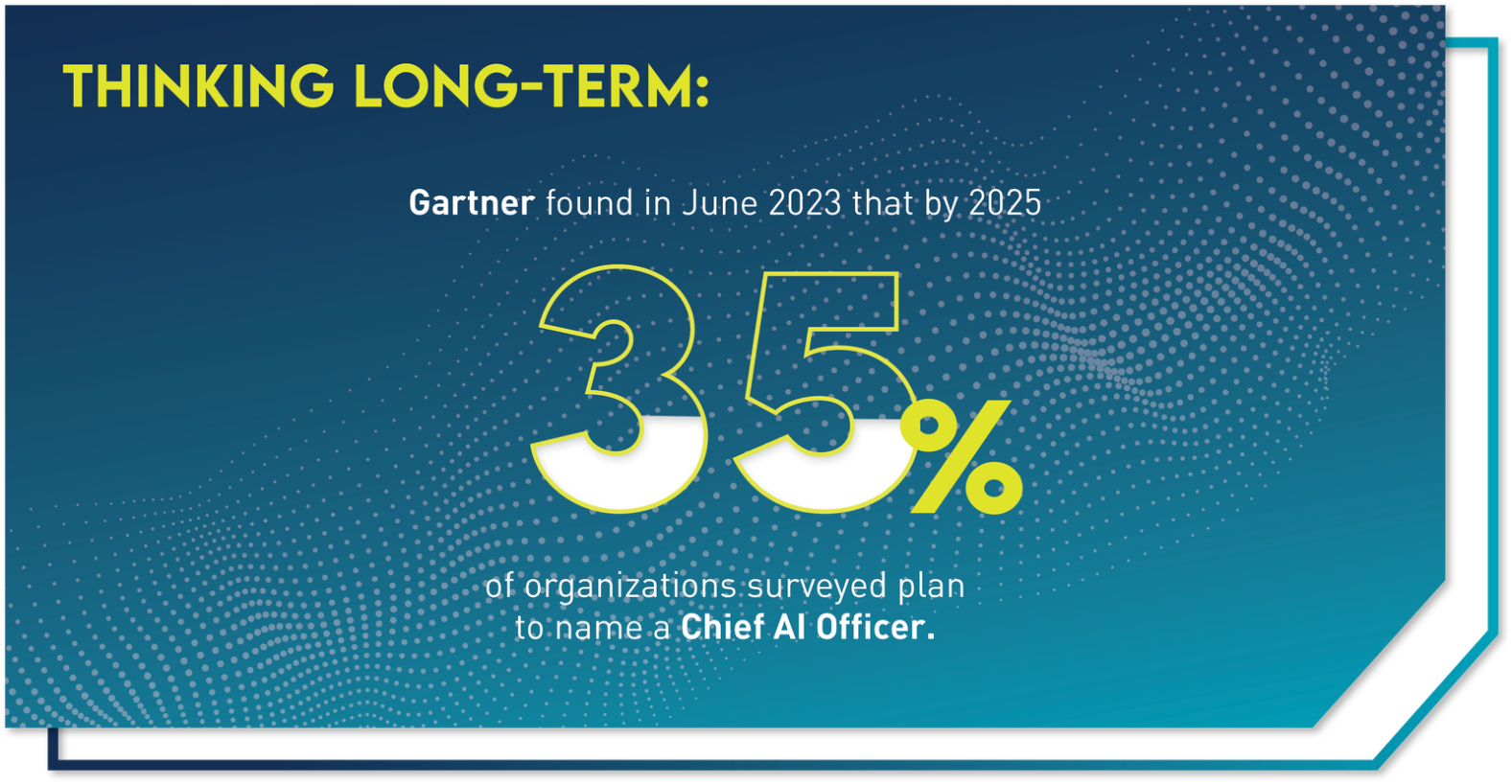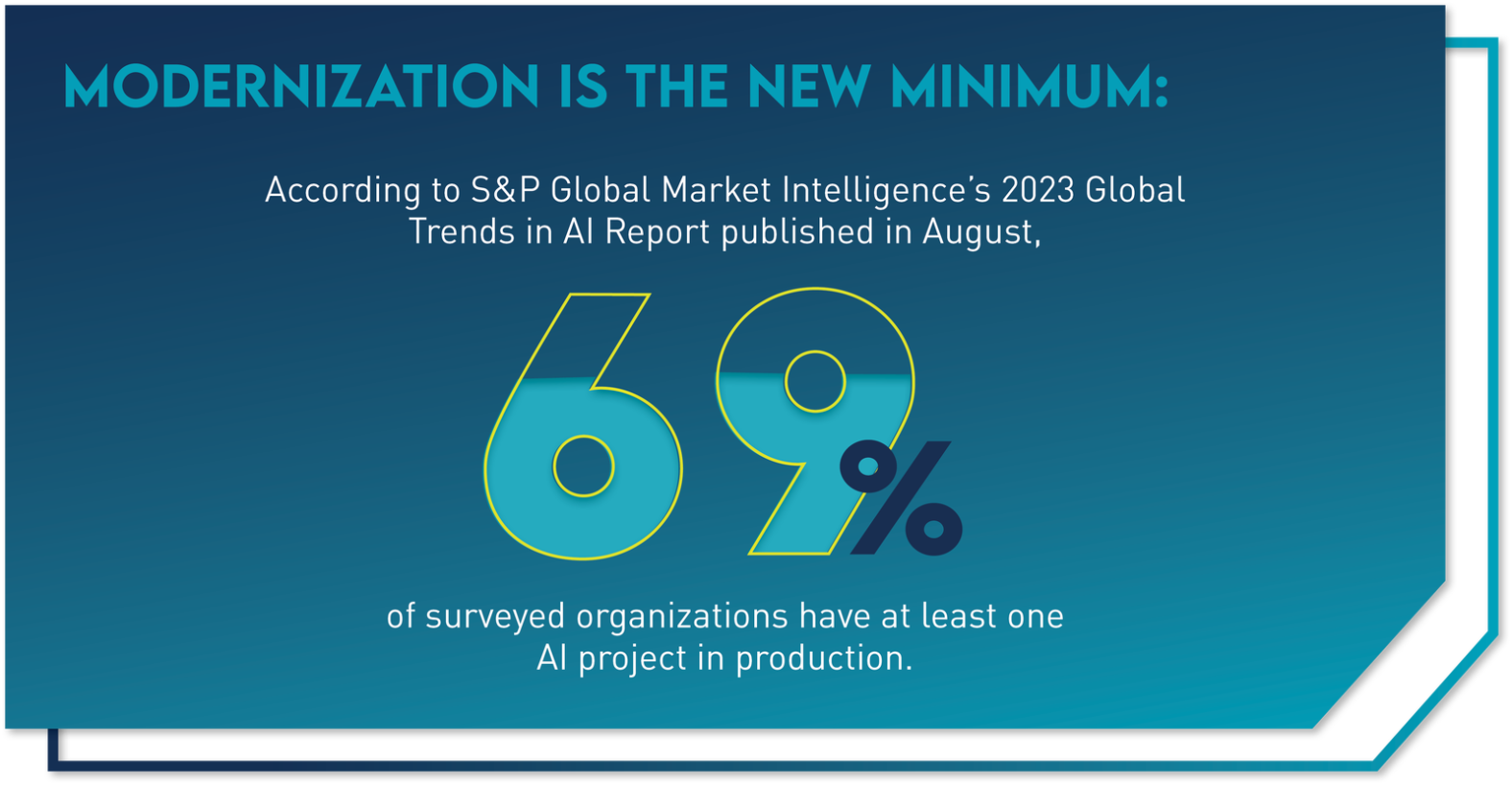How do I advance my data and technology to enable my organization – including delivering stronger customer and workforce experiences? Discover below.
Welcome to the third, and final, installment of our blog series: “The Modernization Roadmap.” In parts one and two, we addressed the weight of workforce and customer experiences and how enabling scalability, predictability, and repeatability is the key to delivering consistently positive experiences for both. We also described how data and systems modernization is the key to delivering these critical types of experiences. But as we’ve addressed throughout this series, before you can move to modernization, you must first focus on operational preparedness.
Let’s briefly recap the core concepts we’ve explored so far:
In Phase One of data and systems modernization, which is all about assessing your current state, we discussed the importance of operational preparedness and introduced four key problem areas that may be holding back your enterprise:
- Disconnection
- Manual Processes
- The Lowest Common Denominator, and
- Lackluster Data
Through Phase Two, which was focused on fortifying your foundation, we uncovered how the four problem areas above can be addressed and resolved through continual application of The Principles of Modernization:
- Common Tools
- Traceability and Measurability
- Governance, and
- Strategic Alignment
To close out this series, we’ll be unlocking the third and final phase: Moving to Modernization. Building on the concepts outlined above, this step explores two premium solutions for modernizing your data and systems, with insights into how each option will help you better serve your customers and employees with scalability, repeatability, and predictability.
Phase Three: Moving to Modernization
Your customers and employees deserve best-in-class solutions, for best-in-class experiences.
While the journey to data and systems modernization is unique for every business, we believe there are two game-changing approaches that can empower every enterprise to yield significant benefits – once they have a strong foundation in place: Artificial Intelligence (AI) and Strategic Portfolio Management (SPM). Let’s explore how each of these solutions can position your organization to consistently deliver scalable, repeatable, and predictable experiences for your customers and employees.
Harnessing the Potential of Artificial Intelligence:
AI has received a tremendous amount of buzz lately – it’s almost impossible to avoid interacting with or reading about its abilities. Its rapidly progressive nature has positioned it as a promising and exciting tool for unlocking an organization’s potential. And once you have a strong data and systems foundation in place, you are positioned to tap into its value.
More specifically though, let’s break down how implementing AI can help you deliver scalable, predictable, and repeatable experiences for your employees and customers:
Scalability: Traditional AI can directly counteract manual processes. It’s best known for automating repetitive tasks and simplifying the handling of extensive volumes of data and customer interactions. By replacing formerly manual activities with automation, AI frees up valuable resources and employee bandwidth, making it possible to scale healthy workforce experiences. This then empowers your teams to consistently deliver enhanced customer experiences. AI also learns and adapts over time as it collects data and feedback, reinforcing your ability to improve processes and experiences in a scalable way.
Predictability: The hallmark of traditional AI is its predictive analysis and modeling capabilities. This function helps businesses anticipate future trends and spot patterns in customer behavior, enabling more accurate, data-driven decision making. By harnessing this capability, leaders can maintain predictable experiences and proactively address needs and concerns. That means customers and employees alike can depend on the consistency of your services and operations, irrespective of changing market dynamics.
Repeatability: AI plays a crucial role in allowing your business to deliver repeatable employee and customer experiences. By reducing time spent on routine or mundane tasks, it empowers employees to perform with consistency while also tackling new problems with fresh ideas. The technology can consistently apply redefined algorithms and rules, reducing errors and variability in data and operations. AI’s core functionality will ultimately boost your capacity for consistently positive and trustworthy customer service.
your capacity for consistently positive and trustworthy customer service.
AI has become popular for a reason, but keep in mind that this technology comes with its own set of principles you’ll need to follow for the best results. North Highland helps clients move beyond surface-level AI adoption and become an AI-enabled enterprise.
For more information on advancing AI adoption, check out this resource: The AI Enabled Enterprise: Your AI “Five First.”
Enhancing Experiences with Strategic Portfolio Management:
Much like traditional AI, Strategic Portfolio Management (SPM) sits at the intersection of data and systems modernization. Using digital tools and capabilities, it allows you to connect and leverage data for optimized decision making and maximized ROI. In fact, Gartner’s 2023 report estimates that companies not utilizing SPM are at risk of seeing 70 percent of digital investments fail to convert to business outcomes.
Unlike AI though, SPM is unmatched in its ability to align projects and initiatives with strategic goals in mind. The top priority of SPM platforms – like NH360 – is to bridge the gap between strategy and execution. SPM accomplishes this by collecting, organizing, and displaying rich insights that are fine-tuned to your goals. This allows you to better calibrate your operations, leading to enhanced workforce and customer experiences.
Let’s dive into how SPM can help you achieve the three pillars of quality customer and workforce experiences:
Scalability: Achieving agile and flexible operations is crucial when it comes to scaling positive experiences. One way to do so is through SPM, which uses strategy execution management and enterprise architecture capabilities to orchestrate and optimize your organization. It contains tools that help you generate a dynamic blueprint of your business, so you can align, plan, and adapt as customer and market trends evolve. For instance, SPM is equipped with:
- Talent and Resource Management to ensure your workforce, data, technology, other resources are allocated effectively.
- Demand Consolidation to help prioritize work while certifying that work is driven from one integrated set of strategies and that the evolution of those strategies is clear.
- Portfolio Governance to help you derive all work from strategy, enable continuous planning, and establish a target state aligned with strategy.
Predictability: SPM does more than unlock business agility – it helps you evaluate and standardize processes so you can eliminate the ones that are holding you back and repeat the ones that work. This is primarily achieved through.
- Scenario and Portfolio What-if Analysis to model and predict potential change to boost future-readiness and protect against unpredictability that stems from unforeseen setbacks.
- Capacity Planning to help you anticipate and prepare for spikes in demand.
- Budgeting and Forecasting to optimize spend across your portfolio – ensuring strategic budgets align with customer and workforce needs.
- Strategic Roadmapping to maintain a dynamic, multi-year roadmap that identifies, visualizes, and actively manages key dependencies for scalable, predictable, and repeatable experiences.
- Outcome Realization to track key results or metrics against each strategic objective, fostering enterprise connectedness.
Repeatability: SPM is essential for bringing repeatability and consistency to your employee and customer experiences, with:
- Cross-Functional Communication to enable your teams to seamlessly connect and collaborate with a higher level of transparency that encourages consistently positive experiences.
- Continuous Planning to support frequent assessment and reprioritization that allows you to repeat the processes that lead to optimal outcomes.
- Common Operating Model to streamline and standardize your operations, promoting consistency and connection across your enterprise.
NH360, formerly UMT360, combines the capabilities listed here and more to help you streamline operations and strategically align your organization. Our experts will work alongside you to create an SPM strategy that expedites the benefits you stand to gain from these comprehensive enterprise solutions – including the ability to deliver scalable, predictable, and repeatable experiences.
Make Modernization Matter
Data and systems modernization – especially systems – is no longer a matter of “if” or “when,” but “how.” Because in order for businesses to keep up and deliver on growing customer and employee experience expectations, modernization is a must.
Because in order for businesses to keep up and deliver on growing customer and employee experience expectations, modernization is a must.
While the act of modernizing data and systems may not help you stand out from the crowd, the quality and effectiveness of your modernization will. There is a significant difference between those who are doing it, and those who are doing it well. The difference between the two? Operational preparedness and a connected enterprise. Top-of-the-line analytical models or technologies will prove fruitless or unexceptional without these guardrails in place.
The data and systems transformation experts at North Highland help businesses champion effective modernization by ensuring they have the right operations in place.
RELATED CONTENT




